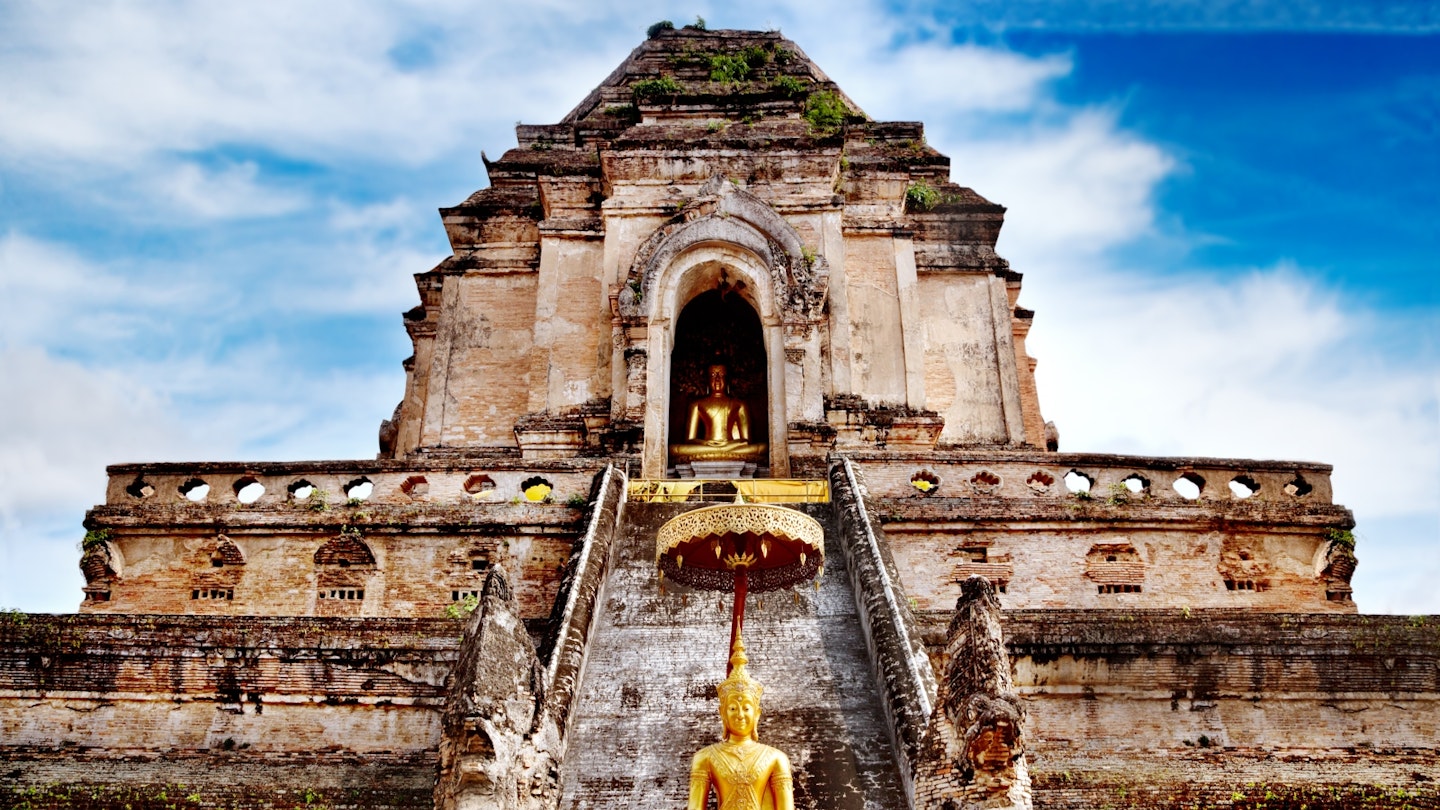Discovering Chiang Mai: A Blend of History and Modern Creativity
Chiang Mai has been heralded as an arty and mellow alternative to Bangkok for decades, and its popularity continues to grow. University students, locals, and travelers of every ilk mingle in this buzzing city, where its artistic past shines through in gilded temples, and its hipster present can be found in modern galleries and coffee shops. Known for its renowned artisans and craftsmen, Chiang Mai earned UNESCO Creative City designation in 2017.
Old Wonders, Modern Innovations
A visit to Chiang Mai practically guarantees you’ll encounter inspiring sights, both past and present, at every turn. One moment, you might catch a glimpse of a centuries-old golden chedi glimmering beyond a humble doorway; in the next, you find yourself stepping into a trendy coffee shop, where the barista’s latte art is almost too beautiful to sip.
A day spent wandering through the historical, walled Old City offers travelers a glimpse into Chiang Mai’s past. Temples and monuments dot the skyline, showcasing architectural influences from the Lanna Kingdom, Burmese rule, and Chinese culture. Step inside these grand temples to discover ancient murals, intricate tile work, or witness artists painting gold leaf on a Buddha statue.
To better understand the cultural mash-up of the city, the Lanna Folklife Museum displays life-size recreations of Lanna village life, providing insight into how this lifestyle shaped modern-day Chiang Mai.
Moreover, juxtaposed nicely amid the history, travelers will notice a vibrant creative scene emerging in the Chiang Mai University area of Nimmanhaemin Rd. Here, you’ll find small art galleries, shops showcasing local fashion designs, and plenty of cafes serving some of the best espresso this side of Melbourne.
Moreover, museums are prevalent, celebrating both new and classical expressions of Thai creativity. Don’t miss the recently opened MAIIAM Contemporary Art Museum, featuring some of the most culturally significant modern Thai art housed in a minimalist converted industrial complex. The reflective exterior allows the building to blend seamlessly with its surroundings, leaving the artwork to speak for itself. In 2017, MAIIAM became the first Thai museum to win the Best New Museum of Asia Pacific Award.
From Chiang Mai’s founding in the 13th century to the modernization efforts led by former Prime Minister Thaksin Shinawatra in the early 21st century, the city has evolved into a melting pot destination showcasing both old and new styles of art.
Cooking Up Creative Cuisine
Thailand’s debut Michelin Guide in 2017 brought new attention to the nation’s cuisine. While Chiang Mai hasn’t received the coveted recognition just yet, its creative and diverse gastronomy scene is rapidly gaining popularity. Traditional recipes remain celebrated, but many have evolved into new dishes, with international influences merging with local flavors to create world-class options ranging from street food to haute cuisine.
For a taste of local life, head down Halal Street for shops and vendors offering traditional-style, less-sweet, and more complex versions of the city’s signature curry noodle soup, kôw soy (khao soi). Visit markets such as Talat Pratu Chang Pheuak by 5 PM to sample the famous ‘Cowboy Hat Lady’s’ slow-cooked pork leg with rice. Alternatively, follow your nose to discover grilled tilapia or broiled chicken served alongside spicy papaya salad.
Furthermore, Chiang Mai’s international fare can rival local dishes. Shabby chic farm-to-table establishment, Rustic & Blue, serves hearty brunch plates featuring fresh breads, eggs Benedict, and healthy smoothies that could have been plucked straight from Brooklyn. For lunch and dinner options, you’re spoiled for choice. Italics at the Akyra Hotel offers innovative Italian cuisine, with delectable pizzas drizzled in truffle oil. Ginger & Kafe @ The House crafts creative cocktails paired with internationally inspired Thai fare, such as Thai-style salmon tartare, while Tengoku specializes in superior sushi. Service 1921 serves pan-Asian cuisine in the colonial elegance of the old British Consulate building along the riverfront.
Don’t forget dessert! Treat yourself to homemade ice cream at the quirky iBerry Garden just off Nimmanhaemin Rd. Here, you can savor unique Southeast Asian flavors like durian or Thai tea while enjoying the ambiance near the giant pink half man, half dog statue wearing sunglasses.
Chiang Mai Craftsmanship and Shopping Delights
Be prepared to bring an extra suitcase to Chiang Mai to accommodate the artisan souvenirs you’ll want to take home.
Street markets are abundant, from the Night Bazaar to the Saturday and Sunday Walking Street markets. These bustling markets are alive with textiles, hand-carved soaps, t-shirts, handcrafted jewelry, trinkets, and more.
Shopping in smaller venues like ‘basket alley’ along Chang Moi Rd reveals hidden gems of Southeast Asian basketry. Expect to find everything from woven hats to lampshades and footstools. Cooperatives selling hill-tribe goods also contribute to local communities, like the Thai Tribal Crafts Fair Trade shop near McCormick Hospital.
Moreover, upmarket shops featuring Thai silk or unique furniture provide tempting options for acquiring quintessentially Thai items at a higher price point. Vila Cini sells high-end, handmade silk textiles housed in an expansive teak residence on Charoenrat Rd. You can find jewelry stores showcasing both traditional and modern designs in the Nimmanhaemin area and Tha Phae Road. At Siam Celadon, you can observe ceramics being crafted up close, then purchase your favorites once the pieces are complete.
Finally, Chiang Mai features its share of modern malls and shopping centers. One Nimman shopping center showcases architecture indicative of Chiang Mai’s modernity, while its shops and restaurants celebrate the city’s rich cultural history.





